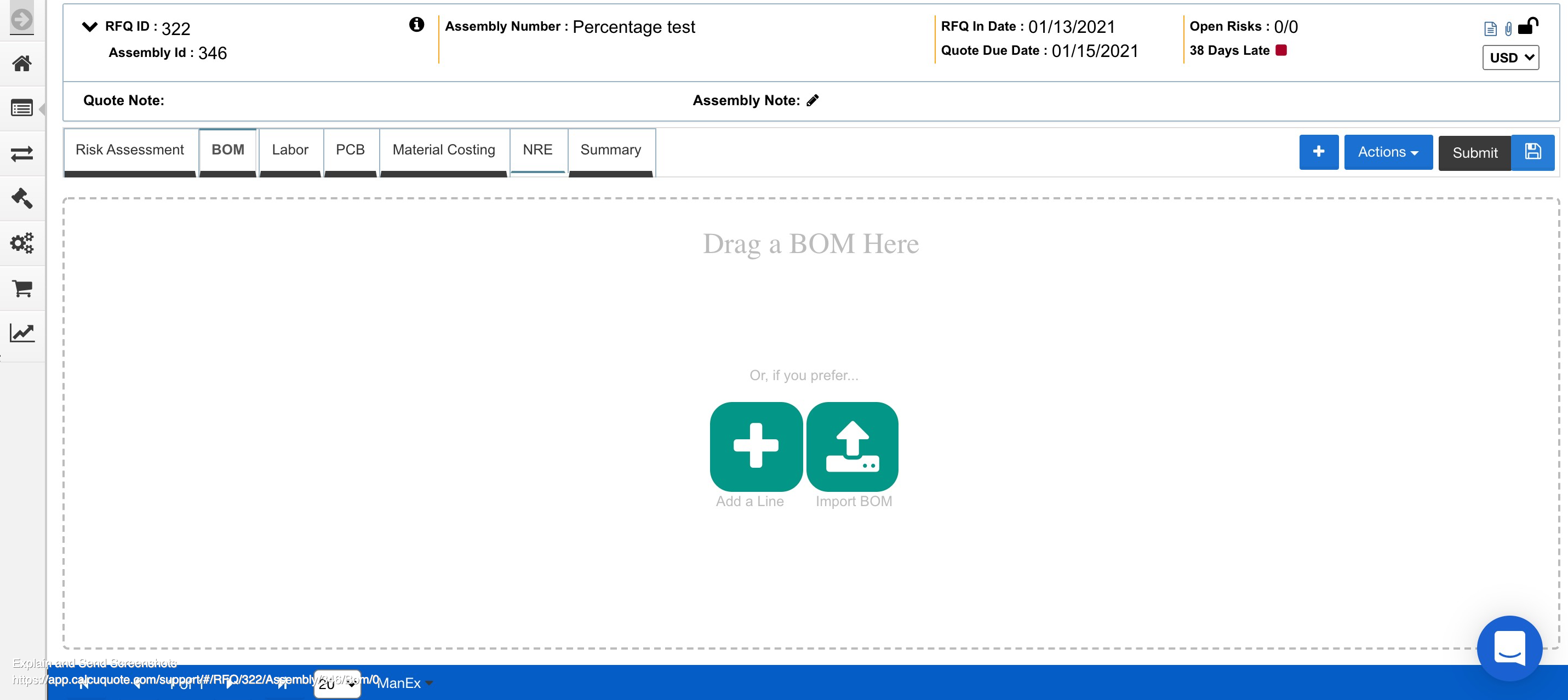Spend less time reformatting in excel and more time being strategic when quoting in QuoteCQ. Our BOM import process is designed for increase flexibility in order to reduce the amount of work you need to do in excel prior to loading the BOM into QuoteCQ so that you can get the quote back to your customer quicker.
A few of the benefits with the BOM import include:
-
Alternates can be in columns or rows
-
Column headers can be in any row
-
A simple interface
Alternates can be in columns or rows
Column headers can be in any row
A simple interface
How to use the BOM import process
When selecting the 'BOM' tab of your RFQ you will see a screen similar to the following:

-
Drag and drop or choose the BOM file to import.
-
There are 4 steps with the BOM import.
-
You can see the Quote ID, Assembly ID, Assembly Number, Rev, and RFQ In Date at the top left of the screen.
-
Quantity Per and Manufacturer Part Number (MPN) are the only mandatory fields
Drag and drop or choose the BOM file to import.
There are 4 steps with the BOM import.
You can see the Quote ID, Assembly ID, Assembly Number, Rev, and RFQ In Date at the top left of the screen.
Quantity Per and Manufacturer Part Number (MPN) are the only mandatory fields
-
UPLOAD: CalcuQuote supports excel file formats. These can be selected from your files or simply dragged into the BOM upload screen.
-
MAP DATA: This allows flexibility to map your columns based on what is available in your file.
First, identify which row is your header and which is the last row to consider. This will now allow flexibility with from a customer BOM where the first row was not the header information. The import will automatically display all columns that are in your excel file. Use the drop down above each column to map accordingly. If you choose not to include a column, you can select Skip from the drop down. Once all of the columns have been mapped, click "Next" to continue. -
VALIDATE: The next step will allow users to review all of the information that was mapped from the previous page, in a clean organized format. Once you confirm everything is correct, select Validate & Next.
-
IMPORT: Finish the import of your bill of material by clicking Finish Import in the bottom right corner. Once you finish the Import, the BOM will be successfully uploaded into the application. You can also download copies of the BOM in Excel or JSON format.
UPLOAD: CalcuQuote supports excel file formats. These can be selected from your files or simply dragged into the BOM upload screen.
MAP DATA: This allows flexibility to map your columns based on what is available in your file.
First, identify which row is your header and which is the last row to consider. This will now allow flexibility with from a customer BOM where the first row was not the header information. The import will automatically display all columns that are in your excel file. Use the drop down above each column to map accordingly. If you choose not to include a column, you can select Skip from the drop down. Once all of the columns have been mapped, click "Next" to continue.
VALIDATE: The next step will allow users to review all of the information that was mapped from the previous page, in a clean organized format. Once you confirm everything is correct, select Validate & Next.
IMPORT: Finish the import of your bill of material by clicking Finish Import in the bottom right corner. Once you finish the Import, the BOM will be successfully uploaded into the application. You can also download copies of the BOM in Excel or JSON format.
Feedback? We'd love to hear your thoughts as we look to continually improve the BOM import process.